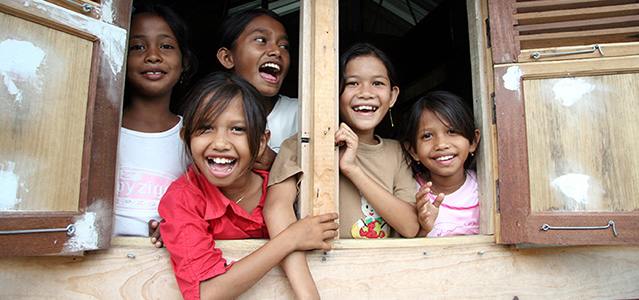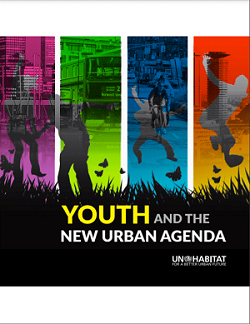Children and Youth

Children and Youth in a Rapidly Urbanising World
Rapid population increase, insufficient housing, unsustainable environments, catastrophic pandemics and pervasive insecurity are among some of the issues facing our cities today. Youth, who make up more than half of the world’s population and more than 60 percent of the population in less developed countries continue to constitute those who face various forms of disparities. They bear the weight of inadequate shelter, services and opportunities and are affected by the effects of unsustainable development. Due to unique requirements of children and youth, the Convention on the Rights of the Child was adopted. It recognizes the basic rights of all children and emphasises the need to ensure their wellbeing and development.
Through the overarching principle of Leaving no one and no place behind, the Sustainable Development Goals and the New Urban Agenda have been acting as a driving force for ensuring that young people and children are equally concerned and efforts made to ensure a world suitable for future generations.
The New Urban Agenda calls for ‘age and gender responsive housing policies and approaches’ (Paragraphs 20, 32, 42,113,134 etc.). Particularly, in Paragraph 61, it is stated that
"Girls and boys, young women and young men are key agents of change in creating a better future and when empowered they have great potential to advocate on behalf of themselves and their communities. Ensuring more and better opportunities for their meaningful participation will be essential for the implementation of the New Urban Agenda."
Youth and the New Urban Agenda
Urban regulations and policies need to be reflective of the realities of young people. Cities can benefit from new thinking on how a youthful population provides opportunities for local economies to close income gaps and expand revenues for local authorities. Coupled with plans that account for larger youth populations living in and migrating to urban areas, cities can increase their potential for becoming prosperous, equitable and innovative. Ensuring youth have a voice and are recognized as stakeholders in legislative frameworks allows cities to harness the potential inherent in the urban demographic youth bulge.
Challenges and Opportunities
In a rapidly urbanizing world children and youth face many challenges ranging from homelessness, high unemployment, crime, violence, drug abuse, lack of access to basic services, poverty, and exploitation as they migrate from rural to urban areas, and across nation states. However, urbanization also presents huge opportunities for youth advancement. The youth are leaders in innovation, the drivers of technology and the digital age, essential for enhanced implementation of SDGs and the New Urban Agenda.
Youth 2030 Cities
Youth 2030 Cities builds the capacity of youth and engages them with local and national governments to create sustainable cities. The project is supported by UN-Habitat in partnership with Fondation Botnar’s Healthy Cities for Adolescents Program (HCA). Youth 2030 Cities seeks to strengthen youth action through increasing young people’s capacity to engage at the local level. Working with youth in six countries (Ghana, Senegal, Ecuador, Colombia India, and Vietnam), the partners are undertaking training and developing tools to identify and facilitate activities related to the Sustainable Development Goals (SDGs).





